#johanna van castilie
Explore tagged Tumblr posts
Text
Juana of Castile X Philip the Handsome
And no, I'm not romanticizing their toxic relationship
#joanna of castile#juana i of castile#philip the handsome#juana la loca#isabel#spanish monarchy#european history#irene escolar#history#johanna van castilie
5 notes
·
View notes
Text
Thread about Joanna of Castile: Part 8.2: “A Mother's Distress: Juana's Turbulent Departure from the Castle”
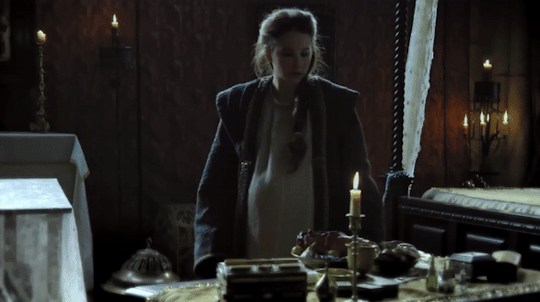
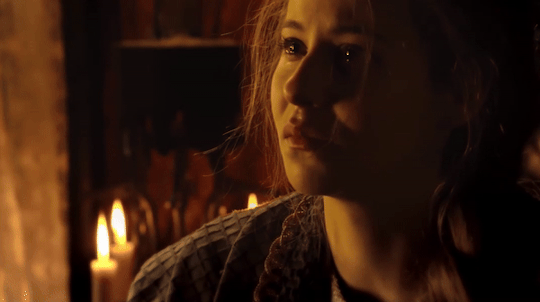

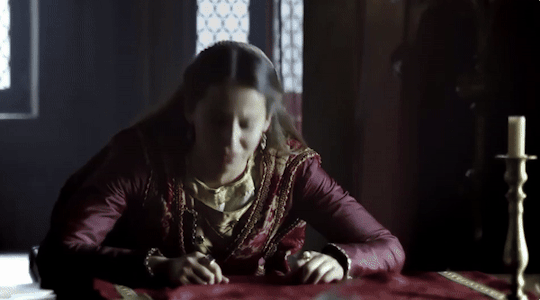
Guessing that her mother was trying every trick she could think of to keep her, Juana abandoned pleading and talking. Instead, she staged an astonishing display of histrionic, even hysterical, behaviour, indulging in tactics she would employ for the rest of her life whenever she was thwarted or powerless. She refused to eat, to talk, or to sleep, she attempted to force a ship’s captain to prepare to sail.
On a cold November night, Juana fled, half-clad, from the castle.
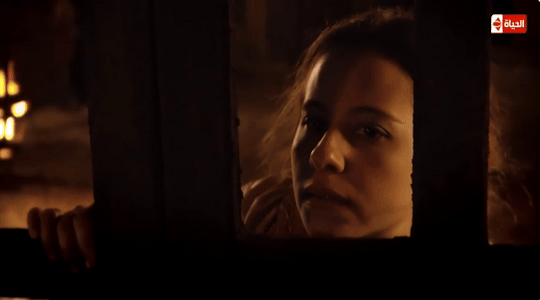


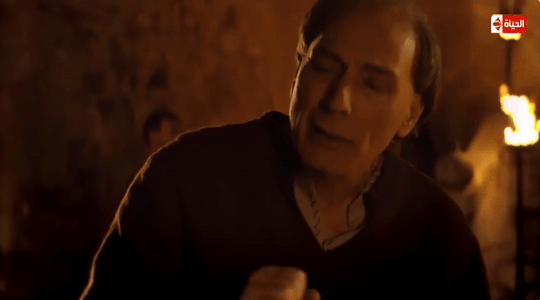


When she realised that Isabel had ordered that the gates be shut, she
“Remained in the outer precinct of the house all evening and all night and all the next day until the second hour in the humidity and night dew and without either hat or coat, during one of the coldest nights of the year so far, and not for a moment would she return to her room.”
She even threatened the bishop with death and torture for keeping her locked up.
Martire describes her prowling the outer precincts of the castle like “an African lion.”
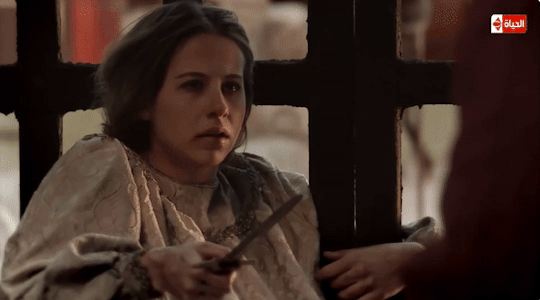
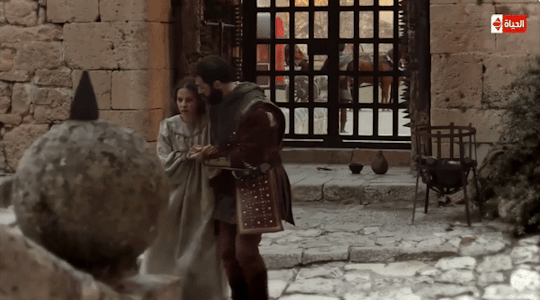
The international fair was in full swing, with the saddle and leather workers engaging in trade close to the castle walls. Concerned that Juana’s departure would cost her authority and reputation, Isabel sent a series of high-ranking emissaries, including Cisneros, in vain attempts to persuade her to return inside.

In the end, Isabel had to come in person:
“With more effort and haste, and making longer days of it than I knew was good for my health.”
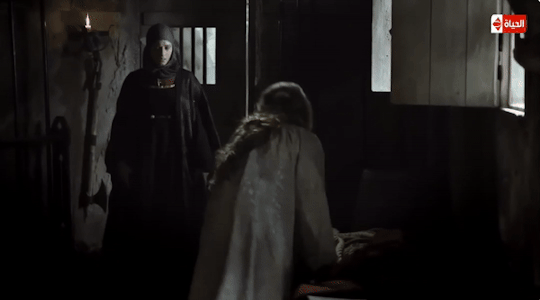
But Juana :
“Spoke to me so heatedly and with words so disrespectful and so far, beyond what a daughter should say to a mother, that had I not seen the state she was in I would not have tolerated it for a moment.”

We do not have Juana’s account. Did she, when arguing with her mother, venture into the darker territory of Isabel’s past? Might she even have referred to Isabel’s role in the descasamiento of Afonso V of Portugal and Juana (‘la Beltraneja’) of Castile when the war of the Castilian succession of 1475–1479 ended in their defeat? The heir to the throne of Castile, Enrique IV's daughter and heir, was still confined to monastic confinement in Portugal in 1503, but she would never give up her claim to the crown.
On 2 December 1503, Lope de Conchillos wrote to his uncle, Fernando's secretary, Miguel Pérez de Almazán, that Isabel was well but “very afflicted and tired” of the princess.
In March 1504, Juana was finally allowed to leave the country. In the end, her tantrums worked. The bishop of Catania, Diego Ramirez de Guzmán, was sent with her to strengthen the Spanish diplomatic presence in Brussels. Moreover, Diego Ramirez de Villaescusa, bishop of Málaga, did not accompany her.


Juana’s journey, from beginning to end, was a reversal of the first. There were no tears when she left Laredo, but Philip eagerly awaited her at Blankenburg/Blankenberge.
While Isabel wondered if she would stay as unhappy as she was while she was here, she was the talk of the Low Countries. Juana's decision to leave Castile would have big effects on her future and the kingdoms she ruled.
Sources: Fleming, G. B. (2018). Juana I: Legitimacy and Conflict in Sixteenth-Century Castile (1st ed. 2018 edition). Palgrave Macmillan.
Fox, J. (2012). Sister Queens: The Noble, Tragic Lives of Katherine of Aragon and Juana, Queen of Castile. Ballantine Books.
Gómez, M. A., Juan-Navarro, S., & Zatlin, P. (2008). Juana of Castile: History and Myth of the Mad Queen. Associated University Presse.
#joanna of castile#juana i of castile#philip the handsome#juana la loca#isabel#juana the mad#juana of castile#johanna van castilie#irene escolar#spanish monarchy#spanish princess#infanta#spain#philip de schone
14 notes
·
View notes
Text
Thread about Joanna of Castile: Part 8.1: "A Tumultuous Dilemma: Juana's Struggle Between Love and Duties"
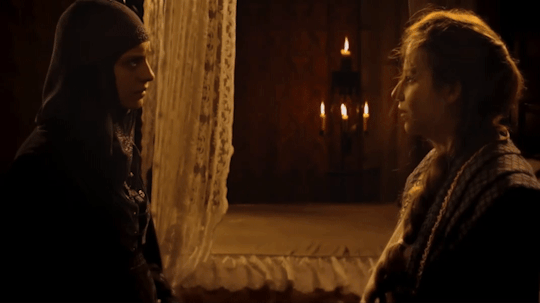
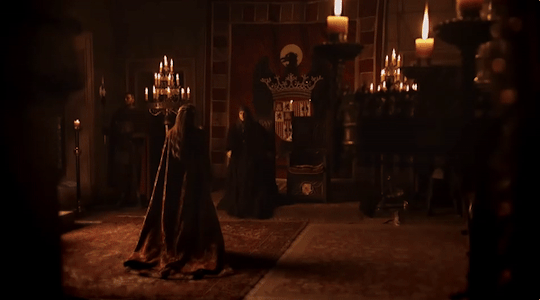

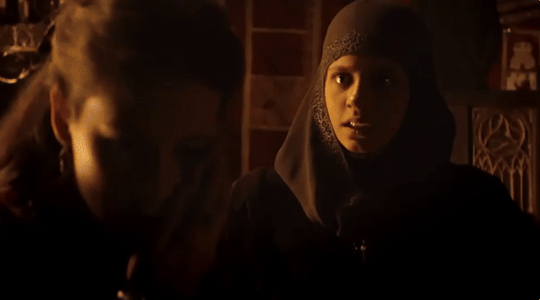
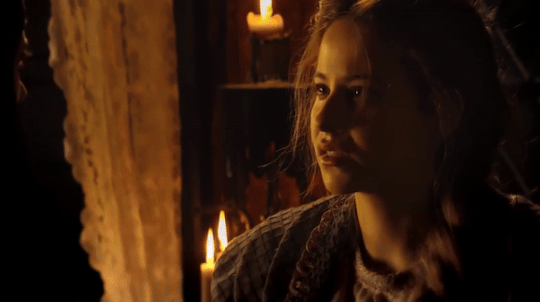

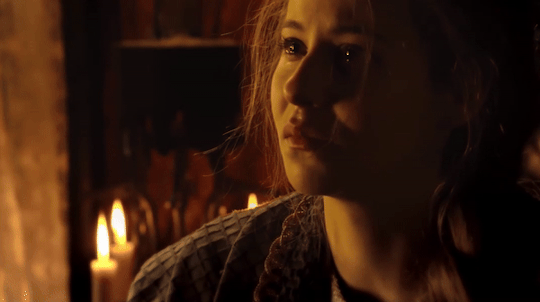

Torn, nonetheless, between mother and husband, old frustrations and resentments erupted. She feared that Isabel planned, in Padilla’s word, to descasar (‘unmarry’) her. The news that Philip, always susceptible to fever, had fallen seriously ill at Lyon would have put her in a state of deep concern. It can be no mere coincidence that, just as Louis’ doctors were despairing of Philip’s recovery, Isabel’s doctors were concluding that relations between mother and daughter had become so bad that they had to be separated.
Even if Juana did not fully realise the seriousness of Philip’s illness, her instinct would have been to rush to his side, and she may have reminded Isabel of the monarchs’ remark of 1500:
“Do not think that you are coming here never to return. Rather, you can come and go as you wish after being sworn-in.”
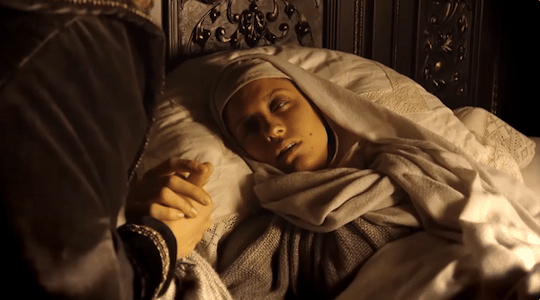

However, the seas were beginning to build, and Juana was unable to travel through France while hostilities continued. Above all, Isabel’s own health was deteriorating. She attempted to conceal Philips eventual arrival home from Juana “because, in truth, she did not want her daughter to return to Flanders, since she felt very unwell with the illness from which she died.”
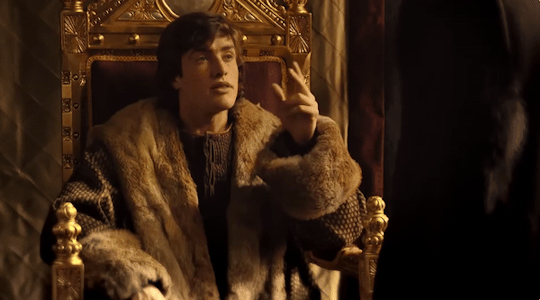



Philip, upon his recovery, maintained the pressure for Juana's return by dispatching a series of messengers and letters. In August, Juana assured him that preparations for her departure were under way; that she and Isabel were heading for Burgos and that Ferdinand was well. In the event, Isabel stayed at Segovia while Juana, proceeding north, stayed in the stronghold of La Mota at Medina del Campo.
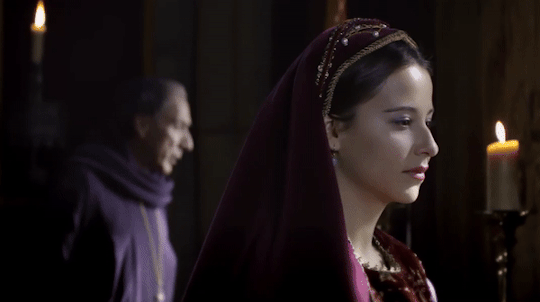
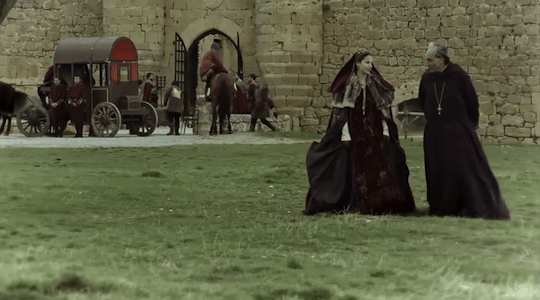

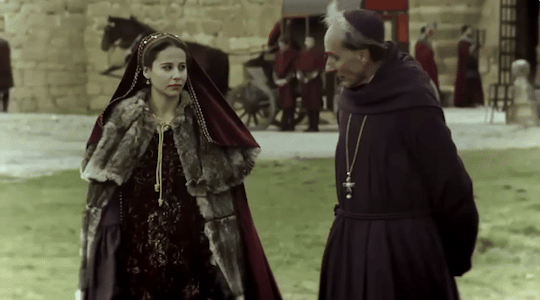

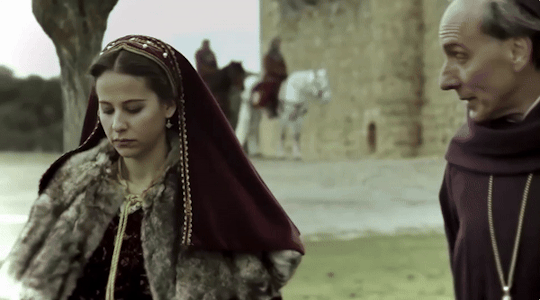
Her residence in the fortress remains something of a mystery. From its hill, the red brick castle, with its massive quadrilinear keep and bartizan towers, was Castile's arsenal as well as archive and occasional lodging place and prison, and it still has a prison. The most likely explanation for Juana's stay is that Isabel had decided that she could be better guarded at La Mota than at the royal palace, since trust was failing on both sides.
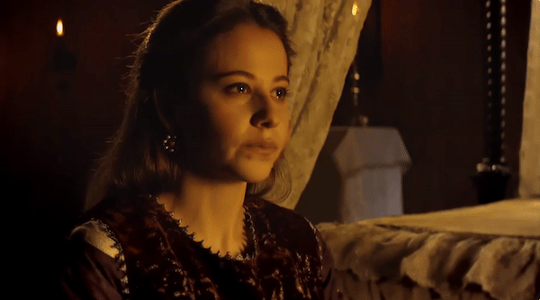

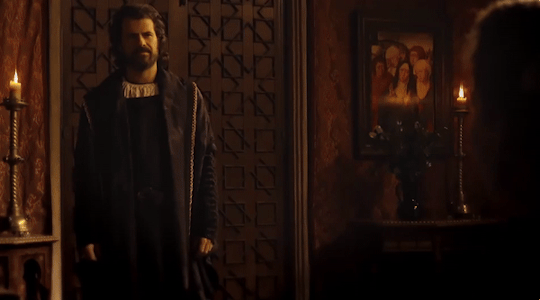
On 6 September, a ship’s captain told Fernando that he had received an order from Juana to await her at Bilbao. A dismayed Isabel wrote:
“I do not think, or expect, and so cannot believe you are leaving, for although there are many necessary reasons for your departure, greater problems may follow if you leave like this.”
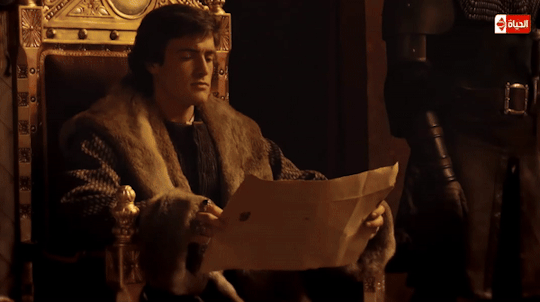

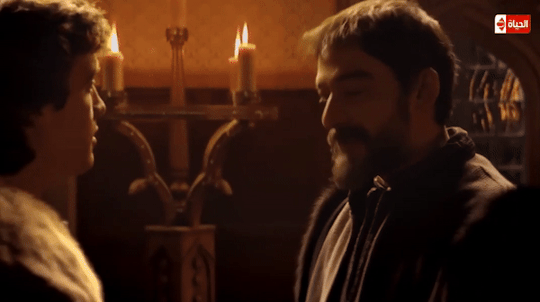



Juana complied. She was, however, beginning to feel pressure from Philip, who used four-year-old Charles to send an emotional appeal. Juana’s last reserves of self-control broke down.
Sources: Fleming, G. B. (2018). Juana I: Legitimacy and Conflict in Sixteenth-Century Castile (1st ed. 2018 edition). Palgrave Macmillan.
Fox, J. (2012). Sister Queens: The Noble, Tragic Lives of Katherine of Aragon and Juana, Queen of Castile. Ballantine Books.
Gómez, M. A., Juan-Navarro, S., & Zatlin, P. (2008). Juana of Castile: History and Myth of the Mad Queen. Associated University Presse.
#joanna of castile#juana i of castile#philip the handsome#juana la loca#isabel#spanish monarchy#johanna van castilie#european history#history#irene escolar#raul merida
8 notes
·
View notes
Text
Thread about Joanna of Castile: Part 8: “The Tragic Departure: Philip's Refusal and Juana's Suffering







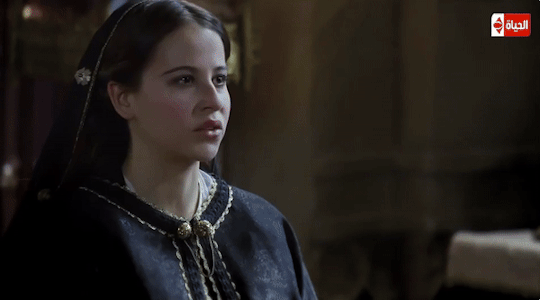





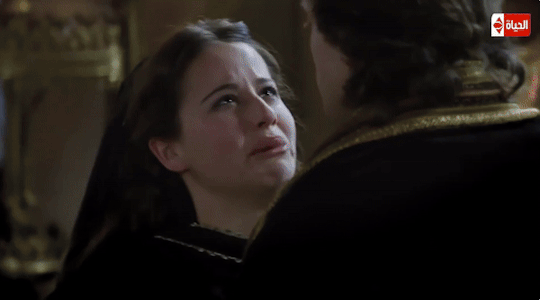



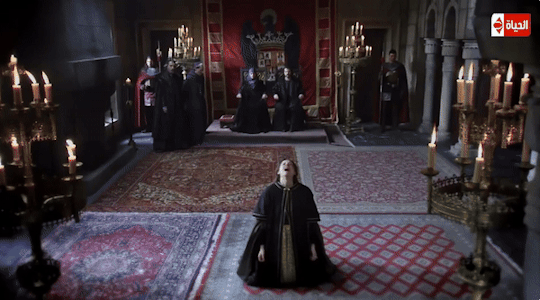


Philips' refusal to stay longer shocked both monarchs and procurators. Castilian procurators warned that if he crossed France during wartime, he would be considered a traitor, exposing himself to the mercy of his enemies and endangering Juana's life. This would not only undermine the monarchs, but also the interests and honour of all Spain, and would cause great agitation. The Aragonese procurators appealed to Philip in the same way. Although the monarchs persuaded Juana to remain for the birth of their fourth child, Philip left Madrid on 19 December.
Martire was dismissive of Juana, who showed no sign of 'royalty or courage'. Burton, perhaps familiar with Martire’s letters, later summarised the situation in his opus on melancholy.
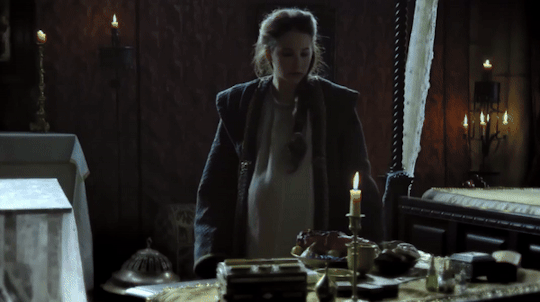
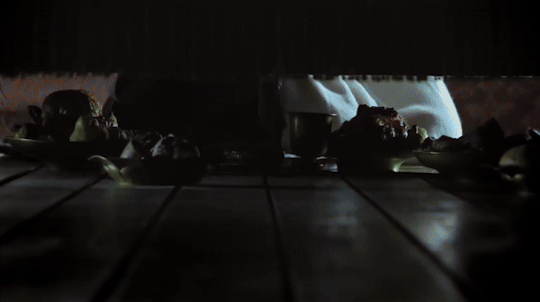
Juana was:
“So impatient and melancholy upon [Philip’s] departure, that she would scarce eat her meat, or converse with any man; and though she were with child, the season of the year terrible, the wind against her, in all haste would to sea after him.”
Historians have also attributed this distressing episode to Juana's personal obsession with Philip, underestimating the broader political aspect. As with all female royals, Juana was born into a highly political setting. Even though she wasn't power-hungry, honour and reputation mattered to her. She was not only affected by her separation from her husband, but also by his conduct towards her. As a result, Juana, who wore violet for her reunion with Isabel in May, bid Philip farewells in December.
Almost certainly, this signalled more than personal grief. She was heir to the many realms of Castile and Aragon and beyond personal grief and dishonour, her mourning signalled a political calamity.
The idea that Philip had run from his commitments as soon as the oath-taking was over made people doubt the succession, which made it very unlikely that the Spanish kingdoms could be ruled by princes who were also archdukes of Austria and dukes of Burgundy. This left Juana with a difficult decision, although not necessarily a resolute one:
To abandon her husband and children and remain in Castile to confront an uncertain future; or, in the event of Isabel's demise, to allow Fernando to continue to lead until Charles reached adulthood.
Considering the magnitude of negative remarks regarding Juana's conduct, it is noteworthy to recall that throughout the spring, she remained faithful to her royal duties. She made various acts of religious patronage, including visits that January to the Clarisan monastery of Rejas. Another sign that she supported the Franciscan order comes from a note written by a man named Francisco Segarra, who was hired by the kings to inspect monasteries in Aragon in 1493. Segarra thanks Juana for an act of charity and for her letters, in which she told him not to hesitate to ask her for more help. He hopes to be able to visit her soon.




On 10 April, she brought comfort to her parents with the birth, at Alcalá de Henares, of a second son, Ferdinand, whom she agreed to leave in Castile. Sandoval describes Juana’s pleasure at the birth and the (fattering) sermon about her that Villaescusa preached at the baptism. Zurita refers to the:
“Great respect that the princess always had for the queen.
Sources: Fleming, G. B. (2018). Juana I: Legitimacy and Conflict in Sixteenth-Century Castile (1st ed. 2018 edition). Palgrave Macmillan.
Fox, J. (2012). Sister Queens: The Noble, Tragic Lives of Katherine of Aragon and Juana, Queen of Castile. Ballantine Books.
Gómez, M. A., Juan-Navarro, S., & Zatlin, P. (2008). Juana of Castile: History and Myth of the Mad Queen. Associated University Presse.
#joanna of castile#juana i of castile#philip the handsome#juana la loca#isabel#irene escolar#Raúl Mérida#Philippe le Beau#Felipe I de Castilla#Felipe el Hermoso#Philipp I. von Kastilien#Filips I van Castilië#Johanna van Castilië#Jeanne la Folle#european history#johanna van castilie#catherine of aragon
10 notes
·
View notes
Text
Musées royaux des Beaux-Arts de Belgique - Koninklijke Musea voor Schone Kunsten van België - Fine Arts Belgium

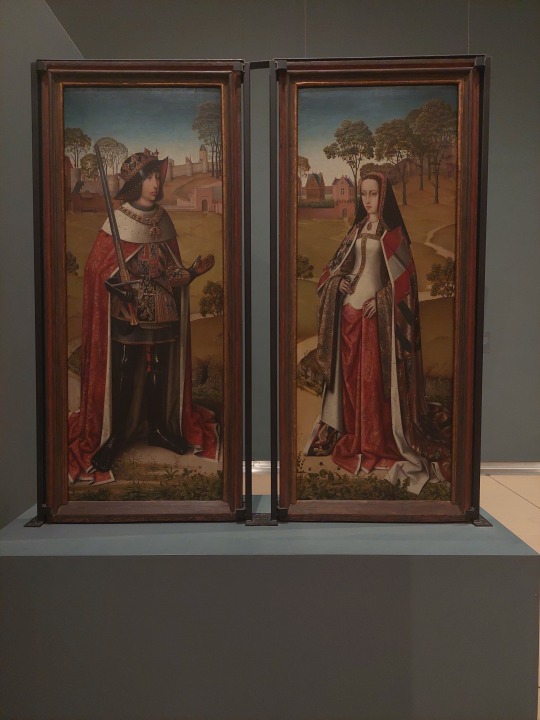
Went to the Fine Arts Museum here in Belgium just to see the portraits of Philip the Fair and Joanna of Castile.
#joanna of castile#juana i of castile#philip the handsome#isabel#juana la loca#spanish monarchy#johanna van castilie#european history#history#irene escolar#raul merida#fine arts belgium#Koninklijke Musea voor Schone Kunsten van België#Musées royaux des Beaux-Arts de Belgique
4 notes
·
View notes
Text
Haßliebe










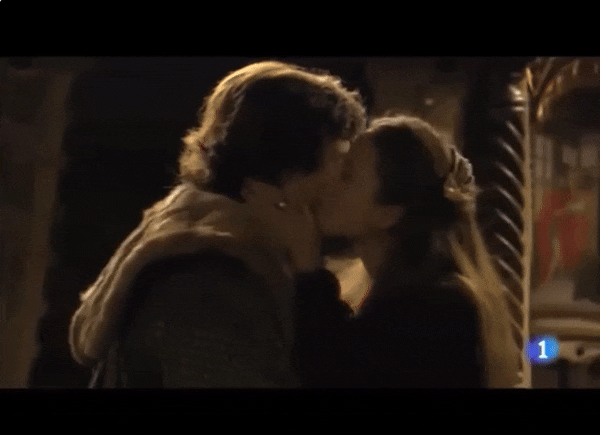

I hate and I love. Why I do this, perhaps you ask. I know not, but I feel it happening, and I am tortured — Catullus 85
Maximilian’s biographer, Wiesfecker, describes Juana’s behaviour as:
"The symptom of a pathological, passionate, if not unfounded, Haßliebe, fomenting continual strife. "
#juana i of castile#joanna of castile#philip the handsome#juana la loca#johanna van castilie#isabel#spanish monarchy#european history#history#irene escolar#Haßliebe#Love–hate relationship#Tsundere#Amour-haine#raul merida#philip de schone#Filips I van Castilië
4 notes
·
View notes
Text
Thread about Joanna of Castile: Part 7.2: Juana and Philip arrive in Spain
They reached the high pass of San Adriano, toiling through heavy snow toward Salvatierra/Agurain, where crowds of Basques surrounded them. According to the Reise author, the prince's hands went red from all the besamanos (hand-kissing).
Throughout the journey, French-language chroniclers emphasise Philip’s primacy. The Spanish kings wanted Juana to be protected. They issued instructions to various cities to make sure the princes stayed together under one roof.

At the monastery of Santa María la Real de las Huelgas, outside Burgos, where they attended mass and kissed relics, two ‘equal’ seats awaited them at the high altar.
Bernardino Fernández de Velasco, constable of Castile, greeted them a half-league from the city, whose gates were closed ritually against them until they swore to uphold its privileges. When, at nightfall, they processed to the cathedral, they did so together, under a golden pallium. A single sword, the symbol of sovereign justice, was held before Juana and another before Philip.
At Olías, north of Toledo, Philip came down with measles. This must, nonetheless, have been one of the happiest moments of Juana’s life. Late one April afternoon, she watched from a gallery as, among an incoming party of riders, she glimpsed a familiar and “very pleasant, laughing face.”

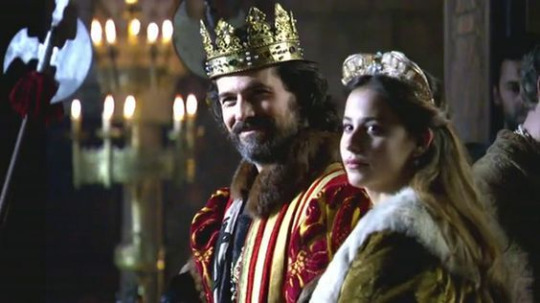
As Juana struggled to get through the crush, Fernando stepped forward, sweeping off his headgear, and kissed her twice “for joy.” Seizing his hand, she led him to an inner chamber where she acted as interpreter between father and husband.
An enthusiastic Philip told his chancellor, Maigny, that Fernando had been:
“très humain et bégnin …autant ou plus que s’il feust esté mon propre père.”
During the entry into Toledo on May 7, Molinet was struck by the ritual struggles between displays of precedence and modesty and respect. Lalaing persists in emphasizing Philip's superiority. The Reise author also focuses attention on Philip and Fernando. Aram argues that Fernando collaborated to marginalize Juana and undermine the principle of female inheritance, which both sanctioned and threatened their authority in Castile.
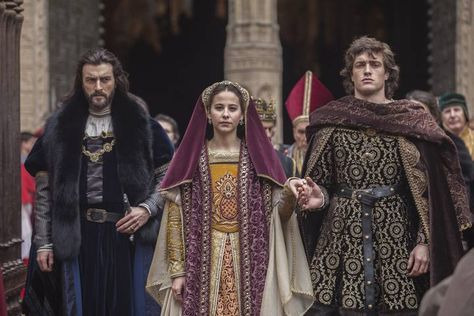
On 22 May, seated below the monarchs in the cathedral, Juana and Philip were sworn-in as the heirs to Castile, León and Granada. During the ceremony, both sacred and contractual, which opened the Cortes of Toledo in 1502, Juana received allegiance first, followed by Philip as the 'legitimate husband'.”
Juana’s pride in her status is reflected in her commissioning of six stunning tapestries, bought for her pleasure, on 10 August 1502. The “golden tapestries,” worked predominantly in gold and silver thread by Philip’s valet de chambre and tapissier, Pierre van Aelst (or Pieter van Edinghen), with whom Juana had a close working association, and dedicated to the Virgin Mary, remain among the greatest treasures of the Spanish state.
These, connected to foreign policy, seem to involve the whole question of Philip’s political independence vis-à-vis his parents-in-law and wife. In a show of spectacular defiance, Philip sent home the major architects of the Spanish marriage within his council, including its president, Henri de Berghes, and refused to accept the combined pleas of Isabel and Juana to reconsider his decision. The plague may have started to stalk the city. Several courtiers died at this time. Busleyden replaced Berghes but fell sick and, on 23 August, he too died. When the princes left for Zaragoza on 29 August, the political honeymoon was well and truly over. Philip’s
“feet itch, his blood boils … and he can settle nowhere,” writes Martire.



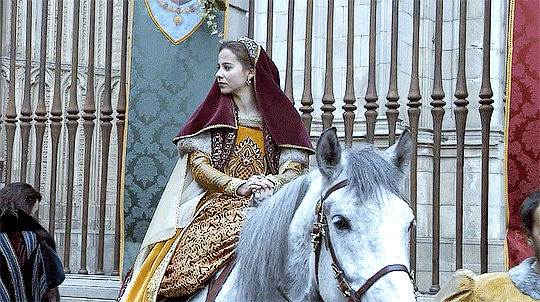
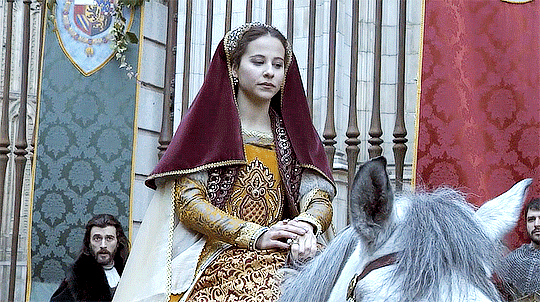




The princes entered Zaragoza on 26 October for the ceremony of oath taking before the Corts.
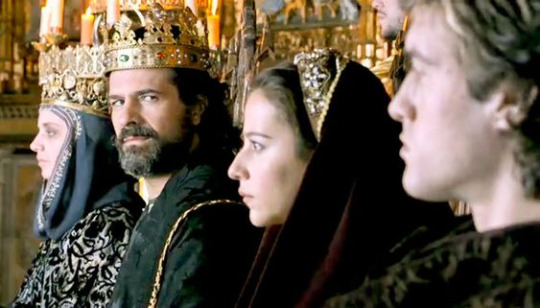
Philip was accepted as the future king, but only in Juana’s lifetime. Juana herself became the first female heir to Aragon, and, in the event, its first and last proprietary queen. Nonetheless, this was a pact conditional upon Fernando failing to produce a new son.
Despite the reservations against female rule, the large numbers attending the ceremonies in Toledo and Zaragoza suggest enthusiasm for the princes.
However, following the partition of Naples, the outbreak of fresh hostilities between Fernando and Louis, culminating in the latter expulsion from Naples, made Philip extremely anxious. Fernando rushed to Madrid, where Isabel was in poor health, before preparing for a fresh military campaign. The monarchs called Philip for talks because they knew he wanted to go home. Juana was left to preside at the Cortes for almost three weeks before she too was recalled. Later Aragonese testimony describes her then much as Fuensalida and Rodríguez de Fonseca had reported:
“very sensible (discreta), prudent (cuerda) and with excellent natural gifts.
After conducting “some affairs” she left Zaragoza on 24 November.
To be continued...
Sources: Fleming, G. B. (2018). Juana I: Legitimacy and Conflict in Sixteenth-Century Castile (1st ed. 2018 edition). Palgrave Macmillan.
Fox, J. (2012). Sister Queens: The Noble, Tragic Lives of Katherine of Aragon and Juana, Queen of Castile. Ballantine Books.
Gómez, M. A., Juan-Navarro, S., & Zatlin, P. (2008). Juana of Castile: History and Myth of the Mad Queen. Associated University Presse.
#joanna of castile#juana i of castile#philip the handsome#juana la loca#isabel#spanish monarchy#johanna van castilie#european history#history#irene escolar#spain#infanta
5 notes
·
View notes
Text
not my video, took it from @royalcastille (TikTok)
#joanna of castile#juana i of castile#philip the handsome#juana la loca#isabel#spanish monarchy#johanna van castilie#european history#history#irene escolar
5 notes
·
View notes
Text
Not my edit but I really love how @chxrrycrown makes short videos about historical drama series.
#joanna of castile#juana i of castile#juana la loca#isabel#philip the handsome#johanna van castilie#spanish monarchy#european history#history#irene escolar#raul merida#heartbroken
4 notes
·
View notes
Text
Thread about Joanna of Castile: Part 6.1: The Princes’ Journey : Juana of Castile and Philip of Burgundy Visit the French Court, 1501
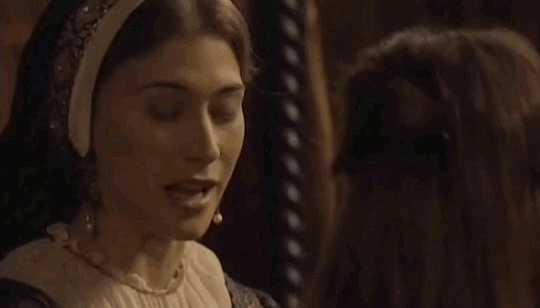
She finally made her way to Queen Anne who was sitting on her throne in front of the fireplace with the princess of Orange. Anne and Juana curtseyed and kissed and made some small talk. Shortly thereafter, the small talk faded. Juana then extended her salutations to the women on either side of the throne, including those from Angoulême, Alençon, and Dunois, as well as the niece of King Louis, Germaine de Foix. Four years after this visit, Germaine would marry Juana's widowed father, King Ferdinand.
The rest of the Queen's ladies were standing along the wall, but the Duchess of Bourbon grabbed Juana by the arm and told her it would take forever to greet and kiss all these ladies. She took Juana to her apartment. When she entered her antechamber she was met by Louis and Anne's daughter, Claude, who was two years old, in the arms of her governess' daughter. Madame de Tournon, the governess, stood behind a group of noblewomen and a group of little girls who were on their best behaviour. Claude took one look at Juana and burst into tears. She was taken away screaming at the top of her lungs.
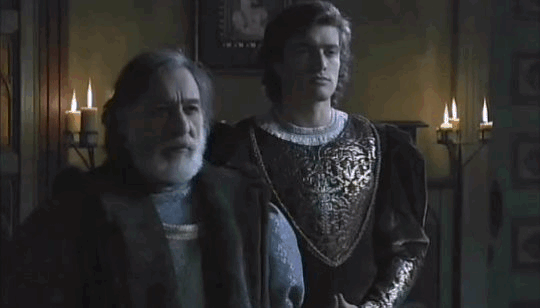
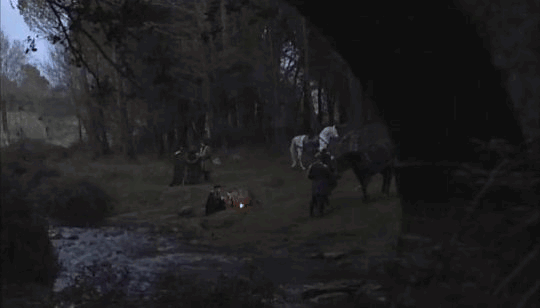
That evening Philip was wined and dined in considerable style. The king was observing the vigil of the Immaculate Conception so he fasted on bread and water and retired early. Juana was waited on by a deputation at seven o’clock with light refreshments. The king’s officer was followed by six pages dressed in the king’s red and yellow livery, each holding a candlestick in their hand. The Duchess of Bourbon followed carrying the preserves and Madame d’Angoulême carried the napkins. Madame de Nevers carried in the knives and forks followed by Charlotte d’Albret and Germaine de Foix, each carrying a dish of sugared almonds. The queen’s apothecary came in last in case Juana had any indigestion from the meal. Only ladies were allowed in the room and they left what they brought on a dresser and the beds.
Juana sat on a cushion on the floor with the Duchess of Bourbon who tried to put her at ease. The duchess rose at the end of the evening and diplomatically declared to Madame de Vendôme she was keeping Juana up and she needed her rest. She left Juana with Madame de Vendôme to show her the rest of her apartments and encouraged Juana to let her know if there was anything else she needed. To ensure there was to be nothing else needed, a procession of servants were furnishing Juana’s inner chamber with the best towels, bed-warmers, sponges, mirrors, nightcaps and pins. Even the basin of her close-stool was made of silver with gold plate around the rim.
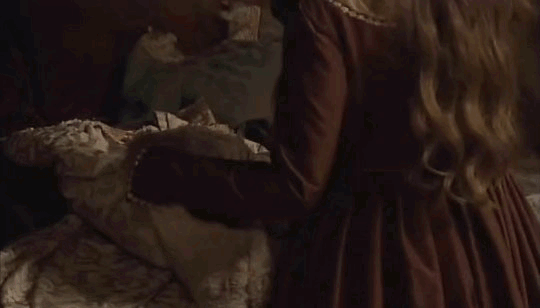
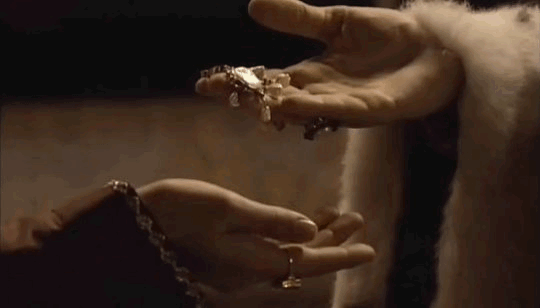
The next day, Queen Anne sent a purse of money for Juana to present in Anne’s name at mass. Juana refused to perform this act of vassalage and insisted she would only give money in her own name.
Anne waited for Juana to follow her out of the chapel but Juana lingered long enough to demonstrate she left on her own accord. Queen Anne was fuming and that evening Juana made her excuses saying she was ill to avoid the festivities. Several ladies of the French court carried spices to Juana.
Philip offered money in Louis’ name at mass that same day.
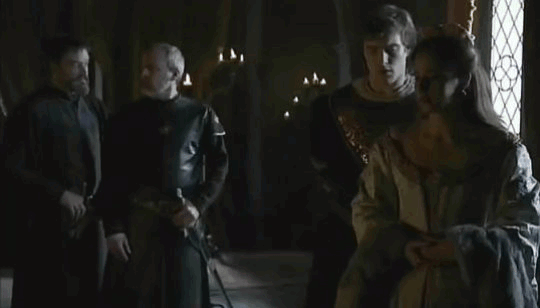
A few days later Juana appeared at dinner in Spanish style dress covered in jewels and cloth of gold. After supper she danced in the Spanish manner, impressing all with her elegance.
The entire visit was filled with banquets, dancing and many private suppers along with worship and thanksgiving. Unfortunately the dreadful weather made hunting impossible. The archducal couple would leave Blois on December 15 with King Louis accompanying them as far as Amboise. Madame d’Angoulême would entertain Juana and Philip for six days at her home in Cognac.

Louis was so pleased with the visit he dreamed of a peace treaty with Spain and Queen Anne’s hopes for the Habsburg marriage for her daughter were greatly increased.
Unfortunately, neither of these things happened. In April 1505, King Louis was gravely ill and the doctor’s feared for his life. He was forced to make a definitive decision regarding the marriage of his daughter Claude. In May 1506 he proclaimed in his will that six-year-old Claude would marry the eleven-year-old heir to the throne, Francois d’Angouleme. Claude eventually married Francois, who became King Francois I upon the death of Louis XII on January 1, 1515.
Sources : Further reading: “The Valois: Kings of France 1328-1589” by Robert Knecht,
“Juana the Mad: Sovereignty & Dynasty in Renaissance Europe” by Bethany Aram
#joanna of castile#juana i of castile#philip the handsome#juana la loca#spanish monarchy#isabel#johanna van castilie#european history#history#irene escolar
8 notes
·
View notes
Text

Finally, the book that I've waited has arrived! I've read so much about Juana online and other books 📚. I'm excited about this 📖, the last one.
#joanna of castile#juana i of castile#philip the handsome#juana la loca#spanish monarchy#isabel#johanna van castilie#european history#irene escolar#history#geschiedenis#Europese cultuur#monarchie#historia Europian#middeleeuwen#mesjeta#15th century#16th century
2 notes
·
View notes
Text
Thread about Joanna of Castile: Part 7.1: Juana and Philip arrive in Spain
There are several vivid accounts of the journey. As I have mentioned in my previous post (Part 6), the princes left Brussels on November 4, 1501, travelling until Mons with Margaret of York and then down through France to Blois. Philip delighted in detours, but Juana, more aloof and withdrawn, preferred the straighter route.
Spanish-language chroniclers interpret the emphasis placed by Juana on her Spanish identity as a challenge to assumptions of French and Burgundian superiority. At Blois, she is reported to have vexed Anne of Brittany by refusing to make an offering with money that Anne sent her, and famously performed a Spanish dance alone before the court. But if pride and sensitivity about status created friction between them, both women seem to have worked to smooth it over:
“it seems to me,” wrote a chronicler here called the Reise author, “that the Queen and madame the archduchess love one another like two sisters …”.
On January 26, 1502 departed from Bayonne in the direction of Fuenterrabía Juana and Philip's army of 200 carriages (one hundred cars for real luggage, numerous other cars for court luggage – all loaded with clothes, beds, furniture, dishes, kitchen utensils, tapestries, gifts – carriages of the nobles, more five royal floats) and his entourage of at least one hundred people, among which there were forty bridesmaids, in addition to the numerous shield bearers, lackeys, kitcheners and service personnel. All this was escorted militarily by 1200 soldiers and 150 Burgundian archers who made up the escort of the princes. All uniformed carrying white banners with the Saint Andrew's cross in red.
The winter made the road hard and carriages and carts cannot continue. The loaded cars returned to Flanders and were replaced by mules and horses from the Basque Country. 25 kilometres of hard winter trip by mule to Fuenterrabía, beyond the Castile's border.
We know from one of several chroniclers who was travelling in that entourage (the Dutch Raymond of Brancafort, reputed for
'to narrate forbidden things, such as the wrangling with the ladies of the court and the pain the archduke suffered in silence')
That in January 27, 1502, in the fishing village of Fuenterrabía at the entrance of the kingdom of Castile, they had a longer stay.
“Our lord, the archduke Don Felipe, entered the lands of Castile and Aragon with tears in his eyes, and not for what he left behind, or for what he had before him, but for an evil of which not even the crowned heads are dispensed”.
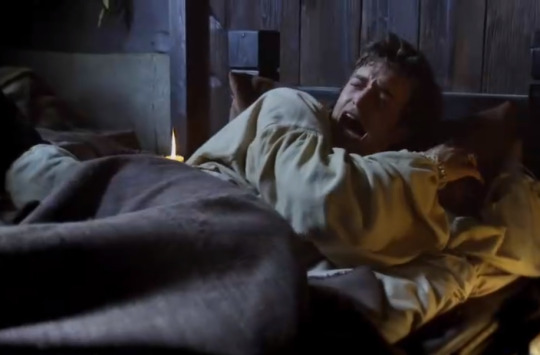


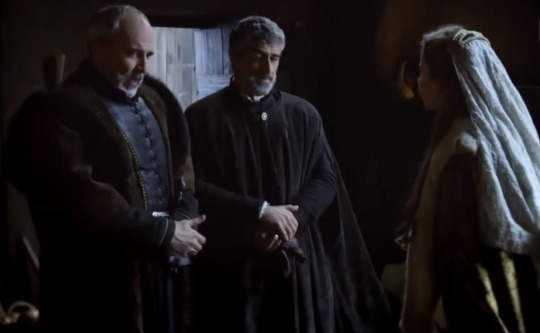
Doña Juana, who having seen her husband arrive in the village “riding with both legs on the same side of the mule”, gave the order, “from there they were not to move, no matter how much the need may be.” Juana personally administered the ointments prepared by royal surgeons. Without the slightest improvement.
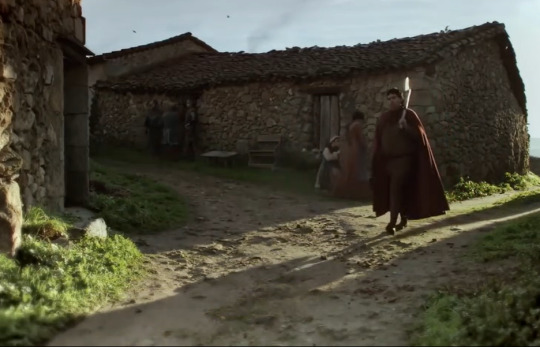
Meanwhile, Fuenterrabía was suffering from serious supply problems. The tiny fishing port had to house, feed and maintain a huge number of visitors among nobles, soldiers, and artisans. And the village started to run out of provisions and supplies for plenty of people and for countless days. The chronicler says that some nobles, who were used to eating five times a day in Flanders, became hungry. The soldiery and the plain people had to settle for eating once a day.
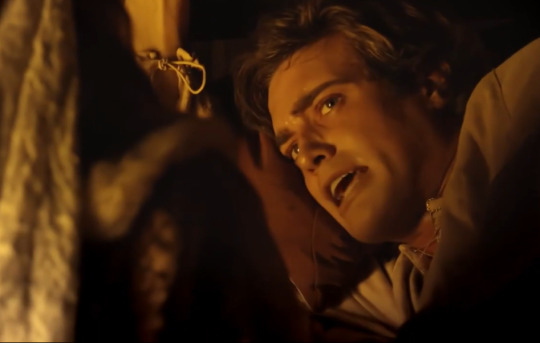
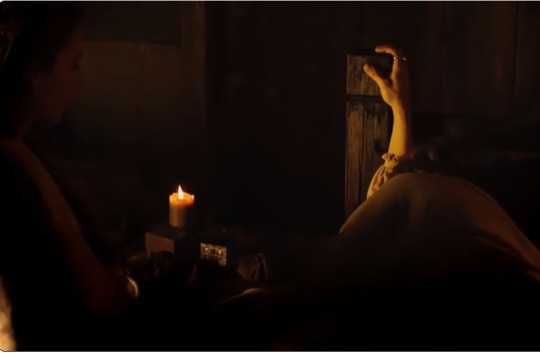

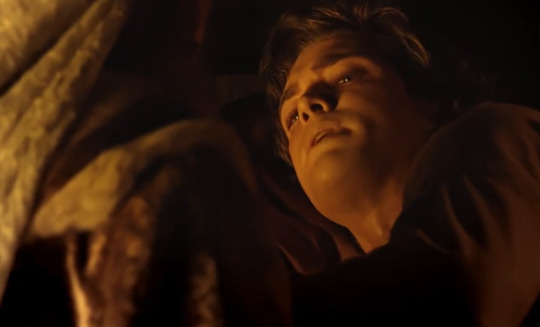
The archduchess was informed by a woman of the town about the near existence of a healer who was called "Aita Sorgin" (or 'father of witchdoctors" in "Euskera", the Basque language), an expert in healing all kinds of ailments.
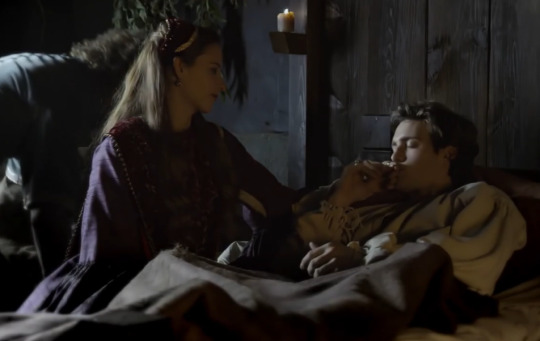

The royal surgeons and the Juana's chaplain opposed, ensuring:
"that in being wizards through, the devil will not walk very far."
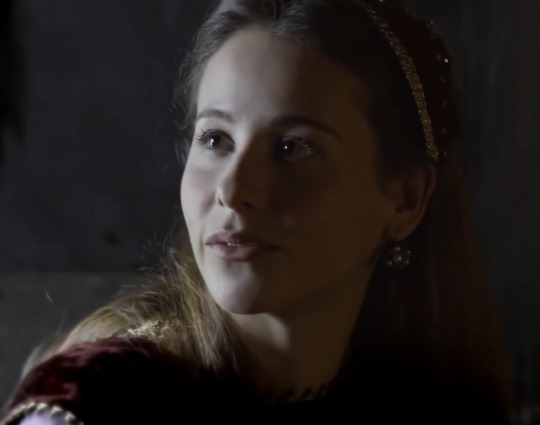
The princess insisted, angrily affirming
"That it has never been heard said, nor is it written anywhere, that the devil is interested in such vile parts of the human body."
With some herbs (probably "ruscus", associated with scrubs in oak forests; with properties equivalent to the components of the current antihemorroidals) and some washes, in a few hours the suffering of Don Felipe disappeared.


A grateful archduke of Burgundy asked him what he could do to compensate him. And the Shaman-like replied with his tone of raw Basque frankness that he only asked that they leave the village as soon as possible. Because if the whole entourage remained one more day, the population would be totally ruined for the rest of the winter.
#joanna of castile#juana i of castile#philip the handsome#juana la loca#isabel#juana the mad#philip de schone#Johanna van castilie#spanish monarchy#castilian#habsburg
5 notes
·
View notes
Text
#going to finish my threads about Queen Juana in September! →upcoming exams
#joanna of castile#juana i of castile#philip the handsome#juana la loca#isabel#irene escolar#raul merida#johanna van castilie#spanish monarchy
3 notes
·
View notes
Text
Juana of Castile according to AI




#joanna of castile#juana i of castile#philip the handsome#juana la loca#spanish monarchy#isabel#european history#history#irene escolar#johanna van castilie
3 notes
·
View notes
Text
Thread about Joanna of Castile: Part: 11.
The subsequent actions of Philip may be considered part of a strategy, endorsed by Manuel, to legitimize his claim to Castile through his wife, but at her expense. He took advantage of the bitter circumstances of Juana's departure from Castile to try to re-spin his reputation to her disadvantage. He had a record of her extravagances sent to the monarchs through Mújica, who now worked as Philip’s agent rather than as Juana’s loyal servant.
When, after Isabel’s death, Philip’s Burgundian envoy and specialist in Spanish affairs, Philibert (‘La Mouche’) de Veyré, reproached Philip for this action—it was “not well done”


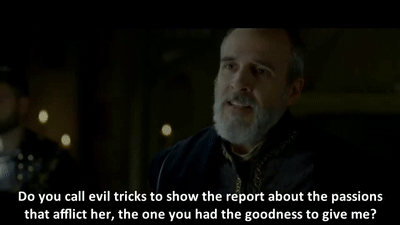
Philip protested angrily that he had been forced to:
“defend my right,” adding: “Whether the Queen is mad or not I shall have what belongs to her and me and will govern or lose my life in the attempt …”.
As Isabel lay dying, a new injection of sarcasm and insolence—almost certainly Manuel’s—is detectable in the joint despatches from Brussels. According to one of these, Juana was entirely to blame for her own isolation:
“Her Highness is her own doorkeeper …”.
They could hardly bribe their way in and if they tried to break down the door, they would risk being injured.
Much as they wanted to see her, “since it would give us authority,” she refused point-blank to see them; she was, she said, “mala de la cabeça.”
This indicates something more serious than a headache, but does not tally with Philip’s own remarks about Juana’s desire to return to Spain and the influence he feared she would exert there.
#joanna of castile#juana i of castile#philip the handsome#juana la loca#isabel#spanish monarchy#european history#irene escolar#history#johanna van castilie
1 note
·
View note
Text
Thread about Joanna of Castile: Part 1: Her Education
… any woman born with a great gift in the sixteenth century would certainly have gone crazed, shot herself, or ended her days in some lonely cottage outside the village, half witch, half wizard, feared and mocked at. —Virginia Wolf, A Room of One's Own
Diverse thoughts flood one's mind upon hearing the name Juana of Castile, or as some may recognize her: Juana la Loca. Countless historians have debated her story. Was she truly insane? Did she battle with a mental disorder? Or was she tragically victimized by the very men she held dear? In my forthcoming posts, I delve into Juana's life, drawing from historical sources. I will write about Joanna's life based on historical sources in my upcoming posts. Enjoy the readings, everyone.

Juana was born in Toledo on November 6, 1479. She grew into a lively, pretty, and graceful little girl who was to develop into a beautiful woman. Juana had a regal and dignified presence, befitting her royal lineage as a member of the powerful Spanish Habsburg dynasty. She was, the Venetian ambassador would write, “very handsome”. According to other authors, she had auburn hair and a fair complexion. Her nose was long and straight, her blue eyes were large, deep, and soulful, her mouth was an almost perfect cupid's bow, her lips were full, her fingers slim and delicate.
Other sources wrote that she was known for her fair complexion, typical of the European nobility during that era. Her face was oval-shaped, with a high forehead, delicately arched eyebrows, and a well-defined jawline. Juana had large, expressive eyes that were often described as melancholic or sorrowful. They were of a deep colour, commonly portrayed as dark brown or hazel. Her eyes were said to possess a certain intensity, reflecting her emotional state and the turmoil she faced throughout her life.
In terms of attire, Juana would have dressed according to the fashion of her time and status as a queen. She wore elegant gowns made from luxurious fabrics, often adorned with intricate embroidery, jewels, and furs. The style of her clothing would have followed the trends of the Spanish court during the late 15th and early 16th centuries.

When Juana was seven, her parents appointed Andres de Miranda as her first tutor. It was his task to teach her Latin, a language in which she became proficient, and Catholic doctrine—essential skills that Deza also taught to Juan, her brother. She was taught to ride, she was taught music and dancing, she learned how to behave in public. And, just like her mother, Juana learned housewifely tasks like baking, spinning, weaving, and sewing.

Ever mindful of her experiences, the queen was determined to give her girls the best start available, and by the standards of her time, she did. Her daughters were not the only educated noble women among the European aristocracy, but they were certainly better educated than most women of their era. There was one omission, though: the study of foreign languages, surely useful for girls destined to marry foreign princes, was largely neglected.
Sources: Fleming, G. B. (2018). Juana I: Legitimacy and Conflict in Sixteenth-Century Castile (1st ed. 2018 edition). Palgrave Macmillan.
Fox, J. (2012). Sister Queens: The Noble, Tragic Lives of Katherine of Aragon and Juana, Queen of Castile. Ballantine Books.
Gómez, M. A., Juan-Navarro, S., & Zatlin, P. (2008). Juana of Castile: History and Myth of the Mad Queen. Associated University Presse.
#joanna of castile#juana i of castile#Johanna I von Kastilien#Juana I de Castilla#Johanna van Castilie#Isabella I of Castile#european history
21 notes
·
View notes